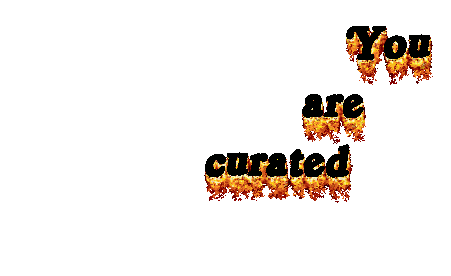Someone on dump.fm expressed the wish to be curated into something. I typed "you are curated when reblogged." Seconds later Seacrestcheadle had this up:

It has been a popular thing to place next to, or layer on top of, other things.
Someone on dump.fm expressed the wish to be curated into something. I typed "you are curated when reblogged." Seconds later Seacrestcheadle had this up:

It has been a popular thing to place next to, or layer on top of, other things.

Yes, if you're going to do an audience participation piece (in this case making images on a screen move as people in the crowd walk this way and that carrying glowsticks) it's probably not a good idea to yell at your audience to shut up when you first get up on stage. New York audiences are swine but you have to get them to like you--throw them a handful of corn or something. Getting testy won't work.
Update: Bailey claims this was a staged meltdown, a la Zach Galifianakis (Andy Kaufman?), and that audience reaction or non-reaction related to the war and hostility themes of the piece. O-kay.
If the discussion of animated GIFs on this page or elsewhere comes off as an "argument about whether or not GIFs comprise an avant-guard art world revolution" and/or a "polemic attachment to [a] medium," that's bad. Defending an idea of GIFs against a misconception or misinterpretation of why someone might make one probably seems over-adamant when the misconceiver shouts and slurs--internet discourse rises to the level of the loudest person in the room.
The "GIFs went away and now they are back" narrative is, in fact, wrong--they have been standard elements of web design throughout the '00s and have been used on "meme" sites such as YTMND more or less steadily. Some attempt has been made to describe how they are used "artistically"--messing with the timing, arranging them in HTML tables or using CSS--but no one I know claims this as an exclusive or essential way of working. It has some "urgency" in the sense that all browsers read GIFs and you might want to make "art" where it can most be read but this is not the stuff of Castro or Mao.
The New York Times is even using GIFs in its editorial art; that's about as un-revolutionary as it gets.